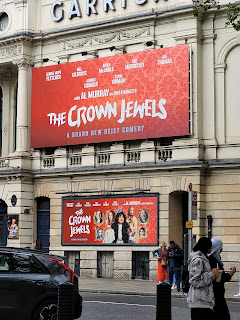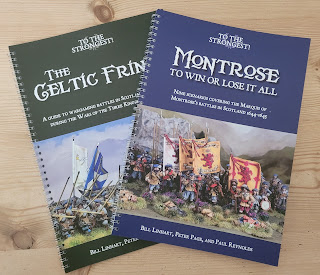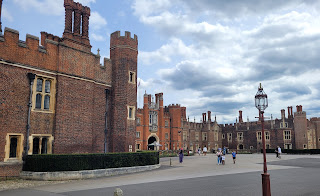Yet More Parliamentarian Command
Continuing the theme of figures becoming somebody else, I thought I'd steal the reveal from Stars In Their Eyes...
Possibly my favourite figure from the entire range of 'characters'. This pose really lends itself to a vignette with the figure talking to a figure on foot. The perfect figure for this being the General Coaker collectable figure from PP.
Originally these limited free figures were available for attendees at PP game days, but more recently they have become a wonderful way of remembering gamers and friends of PP who have passed away. Limited to one per household, I'd already utilised my General Coaker figure in a regiment of foot, but was fortunate to be a gifted another (thanks Will). Maybe the figure on foot has just climbed down from a tree at Naseby and is reporting the location of the King to his colonel?
John Okey was a London merchant, and later an MP for Bedfordshire. He's probably much better known as a colonel of dragoons who lined the Sulby hedges at Naseby, and as a signatory of Charles I's death warrant.
Some claimed that Okey was a brewer, his family appear to have been relatively prosperous, and by 1640 he owned a ship chandlers in London.
Okey was a captain in Richard Browne's Regiment of Dragoons before joining Lord Brooke's Regiment of Horse in February 1643, where he served until May of that year. He transferred to Hesselrigge's Regiment of Horse initially as a captain, being promoted to major in July 1644. In April 1645 he would be promoted to colonel of the newly formed NMA Regiment of Dragoons.
At Naseby his dragoons famously lined the hedges at Sulby, and it is close to there that he is reputed to have seen the King.
In 1648, he was appointed a commissioner to the High Court of Justice, and was one of 135 men who were selected and appointed by "An Act of the Commons Assembled in Parliament" to try the King. Okey was present for most of the court's sittings of Charles's trial. In turn he would sign the King's death warrant.
Involved in The Humble Petition of Several Colonels of the Army in 1654, he would be disciplined and lose his commission.
He lived in the Round House at Brogborough during the 1650s and his estates included the honour of Ampthill, the manor of Millbrook, Brogborough Park and Lodge and lands in Leighton Buzzard. During this period he was active in Bedfordshire affairs and as a Justice of the Peace. He may have been involved in the establishment of John Bunyan’s first Baptist church in Bedford.
After the Restoration he fled abroad, but was betrayed, arrested and returned to England where he was tried and executed as a regicide.
I'm Black Tom, and tonight Matthew I'm going to be Sir Edward Rossiter. Sir Edward has graced these pages before, or rather his Regiment of Horse has.
Rossiter’s family acquired gentry status in Lincolnshire in the 16th century. He was indicted for treason at the Grantham assizes in 1643, and took a prominent part in the first Civil War as a Parliamentarian officer. He was again in arms against the Royalist garrison of Pontefract in 1648, but as a staunch Presbyterian abstained from the House after Pride’s Purge.














Comments
Post a Comment